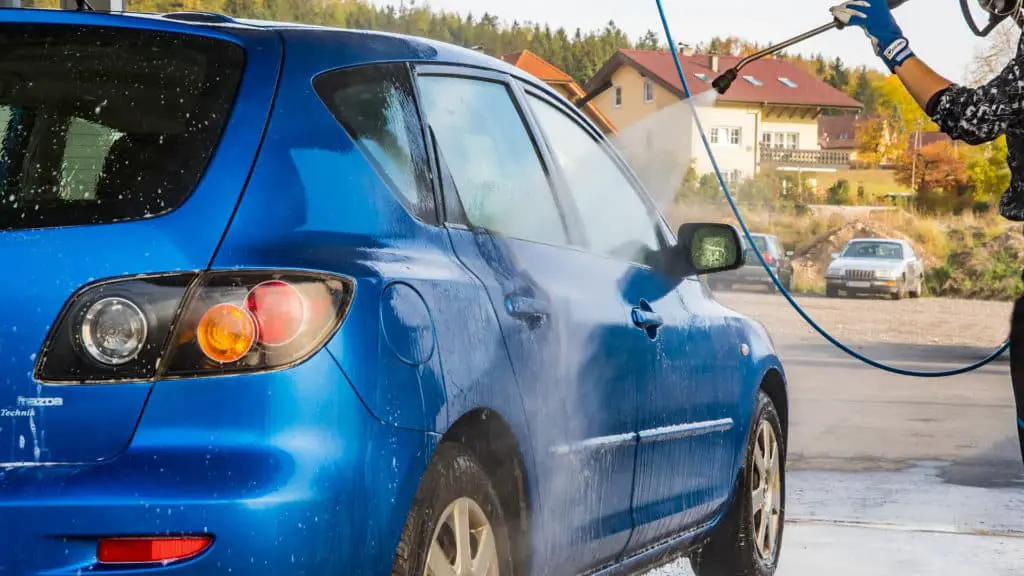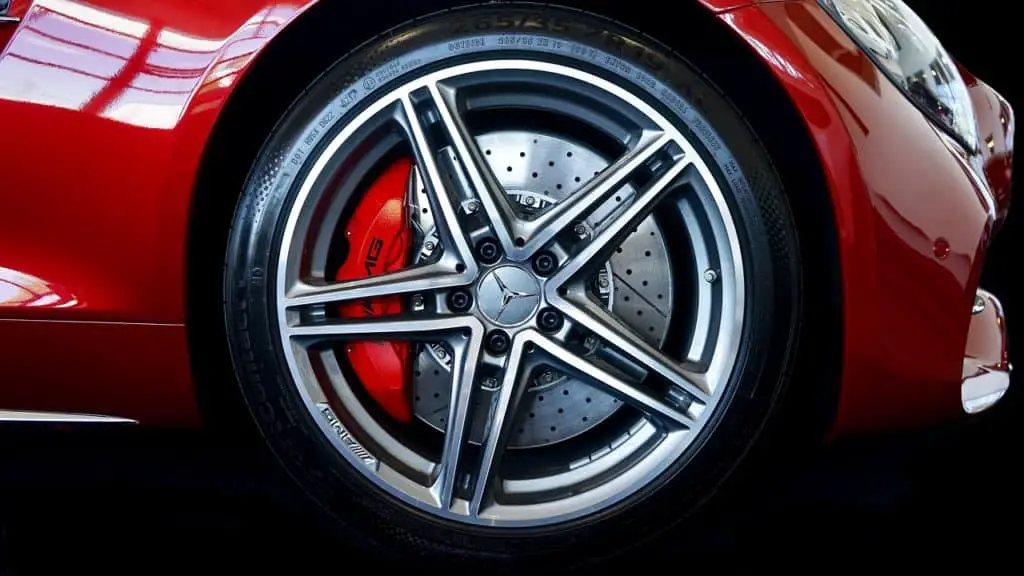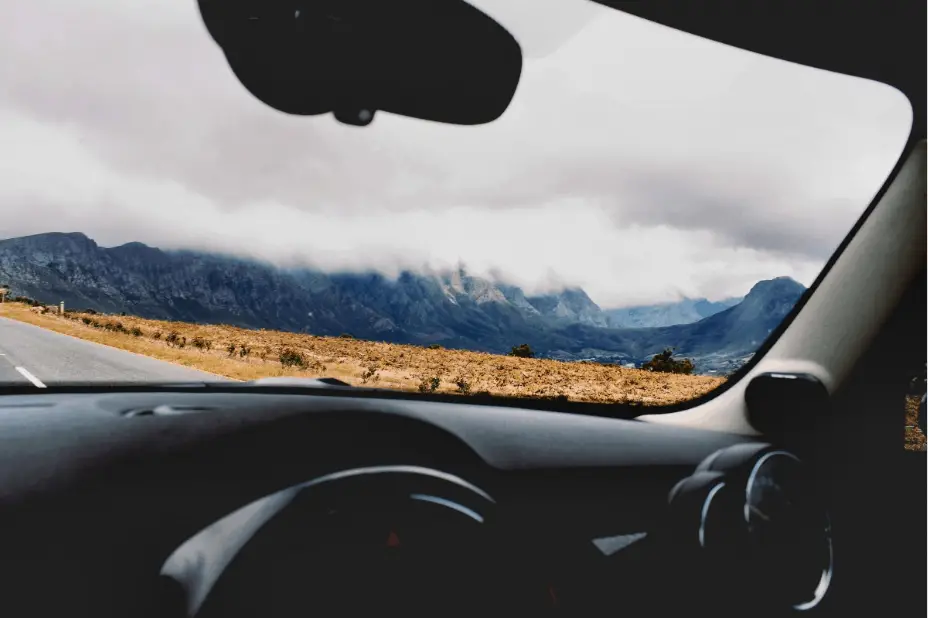- What Is The Two Bucket Car Wash Method (Beginners Guide) - July 2, 2021
- Will Washing Car Remove Wax? What You Need To Know - December 3, 2019
- What Causes Scratches On Car Paint: You Should Know This - April 29, 2019
Last Updated on March 20, 2025 by Nate Schnell
Pressure washing your car can seem like a perfect solution—it’s quicker than hand washing, less physically demanding, and can deliver excellent results. But before you pull out your pressure washer, it’s crucial to understand exactly how to use one safely and effectively.
Pressure washers are fantastic tools, especially if your vehicle is covered in mud, road grime, or if you’re short on time. Unlike automatic car washes, a pressure washer allows you greater control, minimizing the risk of swirl marks or scratches often left behind by brushes. However, if you’re not careful, a pressure washer can damage your car’s finish, trim, or seals.
This guide will help you use a pressure washer confidently, delivering spotless results without harming your vehicle.
Is Pressure Washing Safe for Your Car?
Pressure washing itself isn’t harmful—what matters is the technique, pressure level (PSI), and nozzle type you choose. When done right, pressure washing can actually protect your car’s paint by removing harmful dirt and debris without direct contact.
However, if you set the PSI too high or hold the nozzle too close, you risk stripping paint, peeling away loose clear coat, or forcing water past window seals. Aim to keep the pressure setting between 1200 and 1900 PSI, which is safe for automotive paint, glass, and plastics.
Benefits of Pressure Washing Your Car
The main advantage of pressure washing your car is how quickly and efficiently it removes dirt. Pressure washing effortlessly cleans areas that are hard to reach by hand, such as wheel arches, door jambs, grills, and undercarriages. It significantly reduces physical strain, as you won’t have to continuously bend or stretch to reach every corner.
Another key benefit is reducing the risk of swirl marks or scratches from hand washing. Using a pressure washer minimizes direct contact between abrasive dirt and your vehicle’s paint, making scratches less likely.
Potential Downsides to Be Aware Of
Although beneficial, pressure washing your vehicle isn’t without risks. A common issue is leaving some dirt behind. Pressure washing relies on forceful water rather than physical agitation. As a result, stubborn grime might remain, particularly if the pressure is too low or if soap coverage isn’t thorough.
Additionally, improper use can cause damage. For instance, if your vehicle has paint chips or loose paint, a high-pressure jet can lift these imperfections, causing more damage. You should also avoid spraying seals around windows and doors directly, as this might lead to leaks or water intrusion.
Essential Supplies for Pressure Washing Your Car
You’ll need more than just a pressure washer to get optimal results:
- Pressure Washer: Electric washers work well for most car cleaning tasks and are easier to maintain than gas-powered ones.
- Car Wash Soap: Always use automotive soap designed specifically for pressure washers or foam cannons. Standard household detergents or dish soap can strip wax and damage paint.
- Foam Cannon (Optional but Recommended): Foam cannons coat your car in a thick, dirt-lifting foam that dramatically reduces the effort required for cleaning.
- Microfiber Towels: Perfect for drying and wiping any leftover residue without scratching or lint.
Step-by-Step Guide to Pressure Washing Your Vehicle
Start by parking your vehicle in a shaded, level area, ideally away from loose gravel or dirt to prevent accidental debris spray.
Pre-Rinse Your Vehicle
Begin by rinsing your car thoroughly, from top to bottom, with plain water using a wide-angle spray nozzle (25-40 degrees). Maintain at least 2-3 feet of distance initially to avoid forcing dirt into the paint. This rinse helps remove loose debris, dirt, and grit.
Applying Soap: Detergent Tank vs. Foam Cannon
There are two ways to soap your car:
A foam cannon is the superior option. Foam cannons provide a thick, rich foam layer, loosening dirt effectively and reducing the need for hand scrubbing. To use a foam cannon, fill it with quality automotive soap (such as Meguiar’s Gold Class) diluted as instructed, attach it to the pressure washer, and spray a thick, even foam layer onto your vehicle. Let this sit briefly, but avoid letting it dry fully.
If you don’t have a foam cannon, your pressure washer may have a built-in detergent tank. Fill this tank with suitable automotive detergent and spray onto your vehicle. Though less foam is produced, it still effectively aids cleaning.
Rinse Off Soap Thoroughly
Rinse your car again, starting from the roof downward, working panel by panel. Keep the nozzle at least one foot away from the surface and angle it slightly downward to avoid pushing water beneath seals or trims. Rinse thoroughly—leaving soap residue behind may cause streaks or water spots.
Drying Your Vehicle
Don’t skip drying, as air drying leaves water spots. Use a clean microfiber towel to dry the vehicle gently. Alternatively, use an electric leaf blower to remove excess water quickly without contact.
Important Safety and Usage Tips
- Always use a nozzle of 25 degrees or wider when washing your car. Narrower nozzles (like 15 or 0 degrees) are for heavy-duty cleaning and can damage your vehicle’s finish.
- Keep the tip of your pressure washer at least 6-12 inches away from your car’s surface at all times.
- Be especially careful around decals, badges, emblems, mirrors, window trim, and seals.
- Never spray directly into door seams, window seals, or other areas where water could enter the interior.
- Avoid pressure washing directly onto chipped or peeling paint. These areas need gentle hand cleaning and professional touch-ups.
Additional Considerations for Specific Situations
Pressure washing older cars with delicate or oxidized paint should be done with extreme care. Older vehicles have weaker paint adhesion, meaning pressurized water could peel away paint. Consider hand washing or significantly lowering pressure settings for classic cars or vehicles with suspect paint integrity.
For larger vehicles, SUVs, or trucks, pressure washers significantly simplify cleaning undercarriages and wheel wells. Using a 40-degree nozzle helps safely clean these difficult-to-reach areas without damaging components or pushing water into sensitive parts like bearings or electrical connectors.
How Frequently Should You Pressure Wash Your Car?
There’s no strict rule, but generally washing your car every two weeks helps maintain the vehicle’s paint and reduces contaminants. If your car sees lots of dirt or road salt, weekly washes might be necessary. Using a wax or sealant afterward helps maintain cleanliness longer.
Final Thoughts on Pressure Washing Your Car
Pressure washing your car offers undeniable benefits: speed, convenience, and improved safety from scratches compared to improper hand washing or abrasive automated car washes. Done correctly—with the right pressure settings, the appropriate nozzle, automotive-grade soap, and cautious technique—you’ll keep your car clean and your paint pristine.
Remember to follow basic safety measures outlined above, choose quality products designed specifically for automotive use, and enjoy the satisfaction of a well-maintained vehicle without the back-breaking labor often associated with traditional washing methods.



